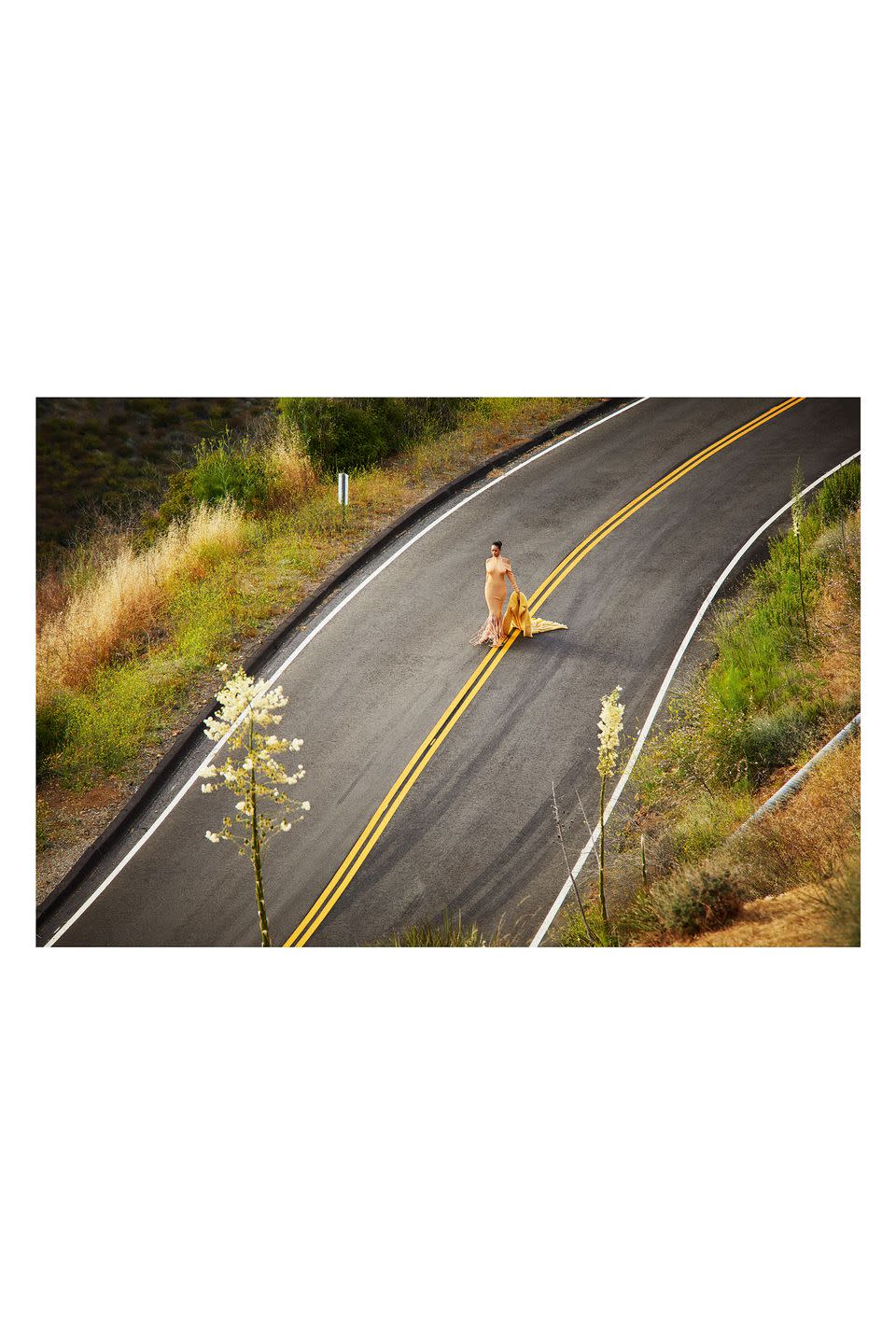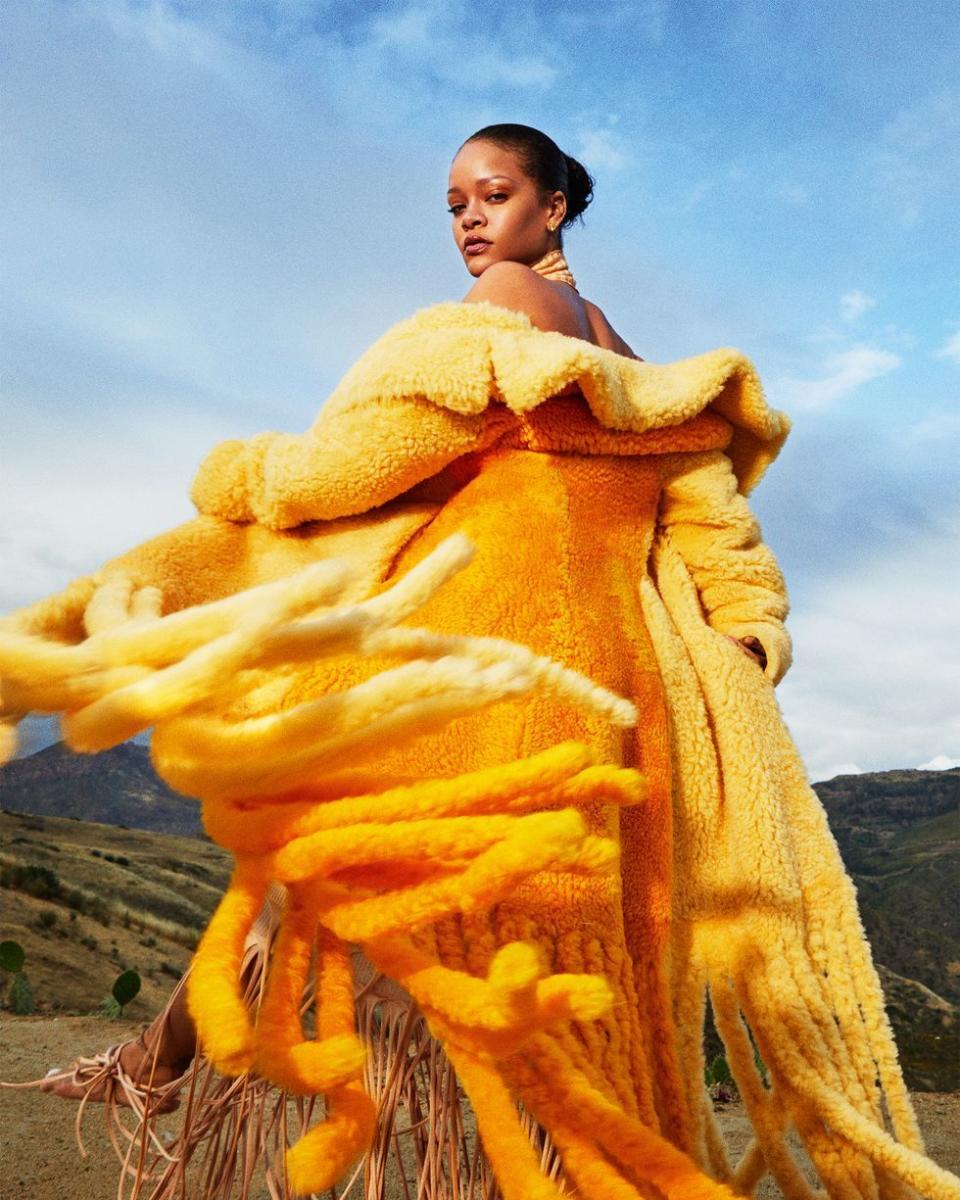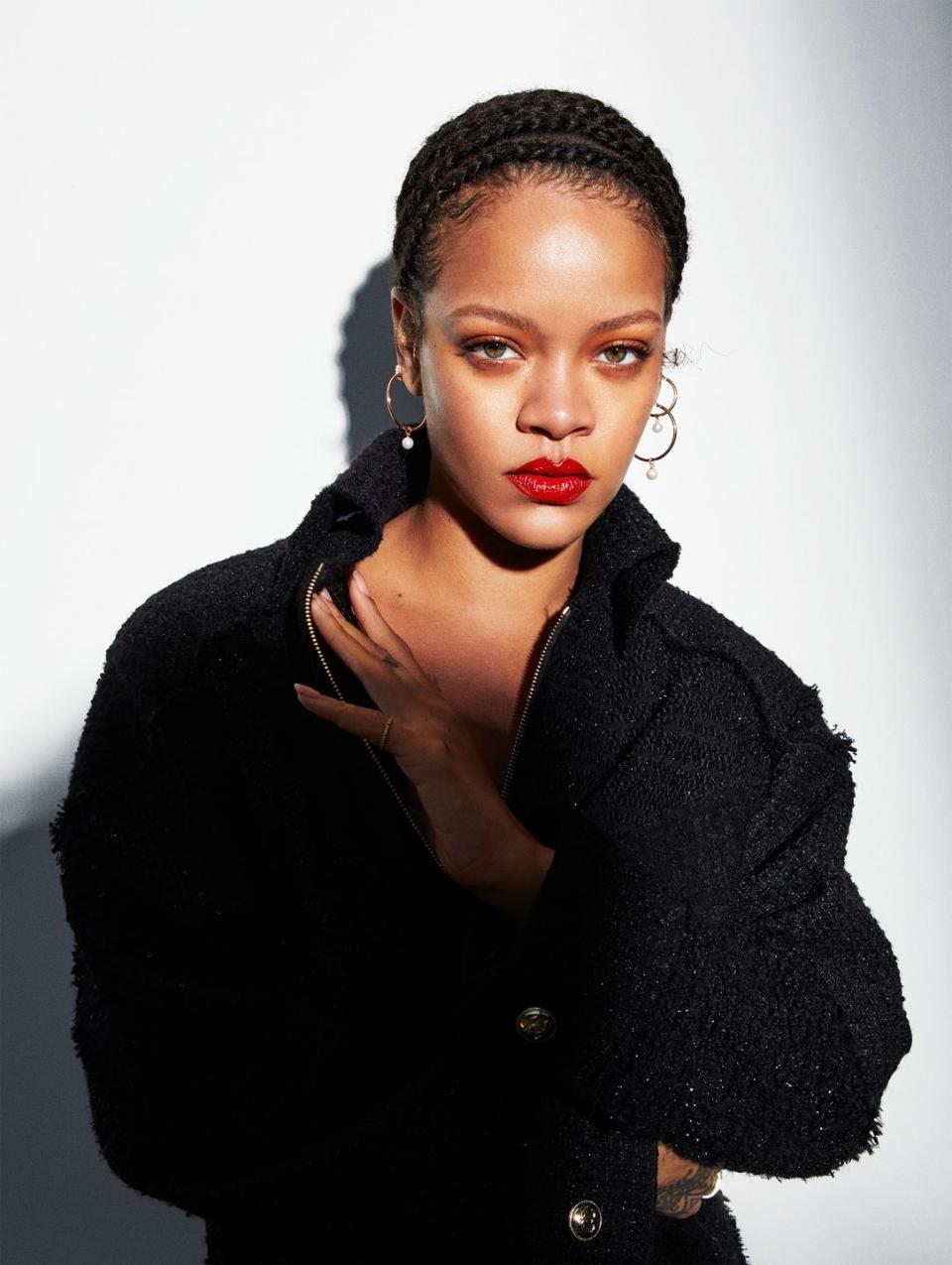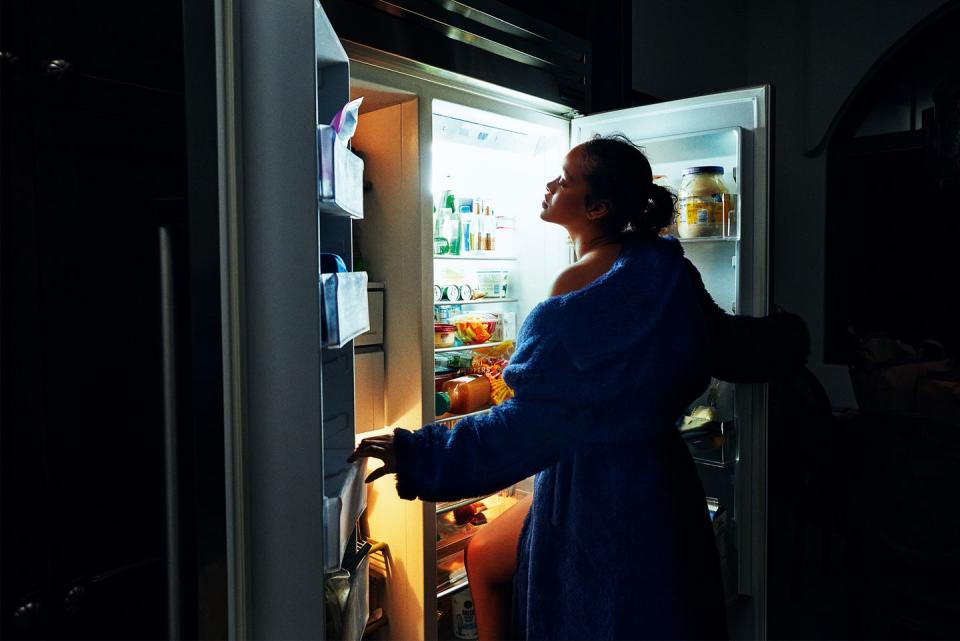Rihanna's remarkable journey: from teenage pop star to entrepreneur and advocate for equality

Shirt and trousers, Fenty; top, Chanel; necklace, anklet, her own; sunscreen, Fenty Skin
Across Rihanna’s chest, skimming her right collarbone, is a tattoo: "Never a failure. Always a lesson." Written in reverse, so the words can be read in the mirror, the sentiment is as much an intrinsic attribute as her green-flecked eyes and compelling voice. When she burst onto the scene aged 17 with her single ‘Pon de Replay’ in 2005, some critics dubbed her a one-hit-wonder.
"That put a fire under my ass, and I just never stopped working," she said last year. "Every time it was about challenging myself – I have to do better, I have to do better. And what’s next, what’s next?" Singer, songwriter, philanthropist, businesswoman; we’ve seen Robyn Rihanna Fenty mature into all these identities.

But unlike those rivals who’ve played at launching a fashion line here, a fragrance there, the 32-year-old has thrived beyond compare, tearing up the rulebook on race and gender and broadcasting a message of inclusivity. Her accolades are manifold: she was the first woman of colour to found a luxury fashion house, the first woman to create a brand within LVMH, and is now the richest female musician in the world, having grown her net worth to $600 million. And that’s not counting the numerous Grammys and Brit awards already under her belt.

When she started Fenty in 2016 – in a tie-up with Puma – she took a conscious decision to separate her enterprises from her musical persona. "Every collaboration I did outside of music, I used Fenty, so that you didn’t have to hear the word “Rihanna” every time you saw something that I did," she has said.
With the star as the creative director of the women’s collection, the sportswear company’s profits rose by 92 per cent in the first quarter. Subsequently, she launched Fenty Beauty in 2017 through LVMH’s beauty-brand incubator Kendo, offering an astounding 40 shades of foundation ranging from the palest to the darkest skin tones. It was a challenge to the industry. In what is now known as ‘the Fenty effect’, other labels including Dior and Revlon followed her lead by establishing a 40-shade standard. (Fenty Beauty is now said to be worth $3 billion.)

Then, in 2018, Rihanna’s lingerie line Savage x Fenty staged its first show at New York Fashion Week, a vibrant event that saw all genders, sizes and ethnicities on the catwalk. Many viewers were moved by the inclusion of amputee models. "I’m looking for unique characteristics in people who aren’t usually highlighted in the world of fashion," the star said of the casting.
It wasn’t long before Bernard Arnault, the chairman and CEO of LVMH, invited Rihanna to create her own luxury fashion house. In May 2019, Fenty Maison was born. "I want to be as disruptive as possible," Rihanna declared.
"The brand is not traditional. There is no runway show. It’s a new way of doing things because I believe that is where fashion is going to go eventually." Subverting the traditional six-month catwalk-to-closet distribution model, she adopted monthly ‘drops’ so consumers could buy directly on release.
She debuted by posting a 1968 image on Instagram, taken by the photographer Kwame Brathwaite, of a Harlem fashion show. The models are standing in front of a sign that reads: ‘Buy Black’; Rihanna had issued an imperative. Her first collection – featuring strong silhouettes, cinched waists and exposed legs – paid tribute to the Grandassa models, a group of female activists co-founded by Brathwaite who promoted the Black is Beautiful movement. Eschewing straightened hair for Afros, and referencing clothes from Lagos, Nairobi and Accra, they embodied style inspired by African instead of Western ideals of beauty.

It was Rihanna’s statement of intent: to create a business model designed to revolutionise the landscape of luxury and shine a spotlight onto Black diasporic history – an area usually overlooked by high fashion. In reclaiming the narrative against appropriation, she was inviting the industry to reconsider who the luxury customer was (Nielsen recently reported that the estimated buying power of African Americans is $1.2 trillion).
Fenty Maison’s latest collection features a reissue of a T-shirt emblazoned with the word "immigrant"– seen as a direct riposte to Trump’s dog-whistle politics – and is anode to the "irrepressible creativity, hope and spirit of youth... in a time where fighting for global freedoms takes centre-stage". Threads of youth aesthetics and 1990s subcultures – grunge hoodies and rave psychedelics – are woven into the summer drop: this is style as empowerment at its best.

Rihanna’s philanthropy has grown alongside her success. In 2006, she set up the Believe Foundation to help terminally ill children. Savage x Fenty and Fenty Beauty both support her not-for-profit Clara Lionel Foundation, named after her grandparents, which has donated $5 million to Covid-response units.
When she received the President’s Award at the NAACP Image Awards in February, she urged us to "fix this world together": "We can’t do it divided. We can’t let the de-sensitivity seep in – the 'If it’s your problem, it’s not mine'; 'It’s a woman’s problem'; 'It’s a Black-people problem'; 'It’s a poor-people problem.'" On Blackout Tuesday, all Fenty brands stopped trading in solidarity with the Black Lives Matter movement. Her voice for the under-served and underprivileged resonates ever more in the wake of the murder of George Floyd, and during this pandemic.

As for the future, we can be sure of more disruption. Rihanna is working on her ninth album and has just launched Fenty Skin, an "Earth conscious" range for all skin types that includes a cleanser, toning serum and moisturiser made with natural ingredients. All this, while redefining the world on her own unapologetic terms. In her own words – what’s next? What’s next?

In need of some at-home inspiration? Sign up to our free weekly newsletter for skincare and self-care, the latest cultural hits to read and download, and the little luxuries that make staying in so much more satisfying.
Plus, sign up here to get Harper’s Bazaar magazine delivered straight to your door.
You Might Also Like


